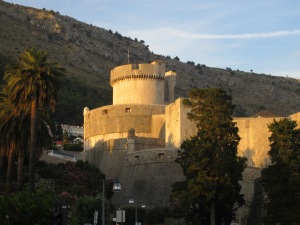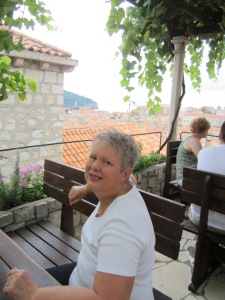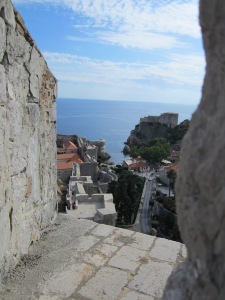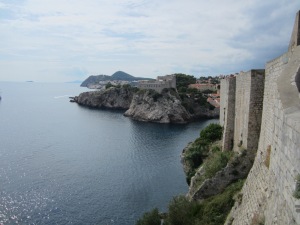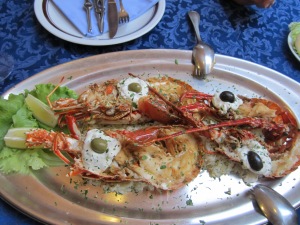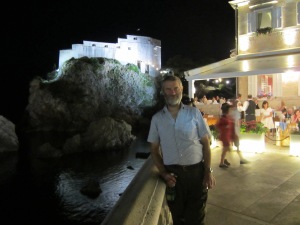Day 1
Lille to Paris by rail is a short, fast trip and, since we were traveling 1st. Class, we were able to book a taxi through the conductor. What a marvellous innovation. We arrived at Gare du Nord, walked along the platform to the head of the train, and there was a taxi driver with our name on a board. So easy – we felt like royalty. We stayed at a lovely little 3* hotel called Hotel Jeanne d’Arc in the Marais. The hotel is next to St. Catherine’s place, which is a pedestrian-only area fringed with restaurants, all with as many outside tables as could possibly fit. We were surprised at how busy Paris is already. The evenings are very long and the outdoor tables were all occupied well into the night. People were picnicking along the Seine, out walking or taking cruises. There is an extraordinary number of boats plying the Seine, some with hundreds of people on them.
We visited the Musee Carnavale – Histoire of Paris, which we really enjoyed, particularly since there is a special exhibition on called Napoleon and Paris. There were some great political cartoons of the day, and other fascinating exhibits such as correspondence, furniture, uniforms etc. In the main part of the museum, I loved the sign galleries – a unique collection of shop signs spanning the period from 16th. to 20th. centuries. Shopkeepers, whose customers were often illiterate, attracted passing trade by shouting their wares and by using pictures, some of which were very innovative and beautifully designed.
Day 2
We decided to visit les Catacombes de Paris but didn’t arrive until around the middle of the day and the queue was impossibly long. The weather had changed and the prospect of standing in the drizzle for a couple of hours held no appeal at all. We started walking instead and finished up in the Jardin Atlantique and the Memorial Museum which are located on top of the Montparnasse station. The Memorial Museum traces the history of three Liberation Resistance Compagnons – General Leclerc, Jean Moulin and the City of Paris. Well worth a visit. We spent most of our time in the Jean Moulin Museum and the collection focuses on Paris under occupation during the Second World War. Jean Moulin was the unifying force behind the Resistance Movement and, famously, early in the war, he cut his own throat rather than sign false documents. He survived and was freed but was again arrested and tortured in 1943 and, sadly, died before the liberation of Paris.
In the evening we met friends for dinner at the beautiful Bouillon Racine restaurant for dinner. The restaurant was established in 1906 and it is decorated in the Art Nouveau style – quite gorgeous. Food was excellent and it was a lovely place to spend our final night in Paris.

Inner courtyard of Musee Carnavale

The sign from the legendary Chat Noir Cabaret located at the foot of the Butte de Montmartre hill

Glasses anyone?

Napoleon Bonaparte – It is my wish that my remains may repose on the banks of the Seine, in the midst of the French people, whom i have loved so well











































